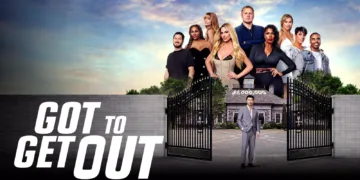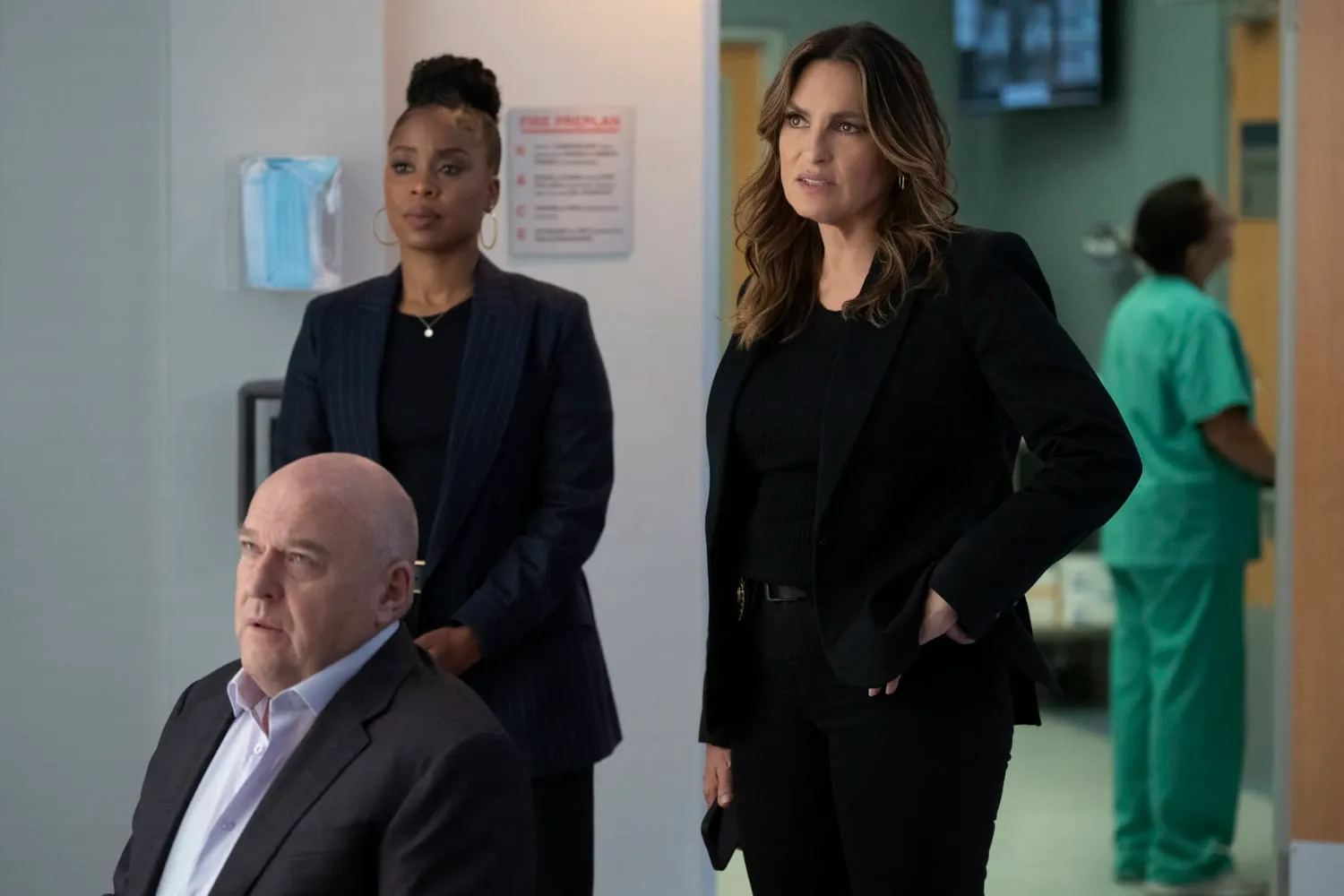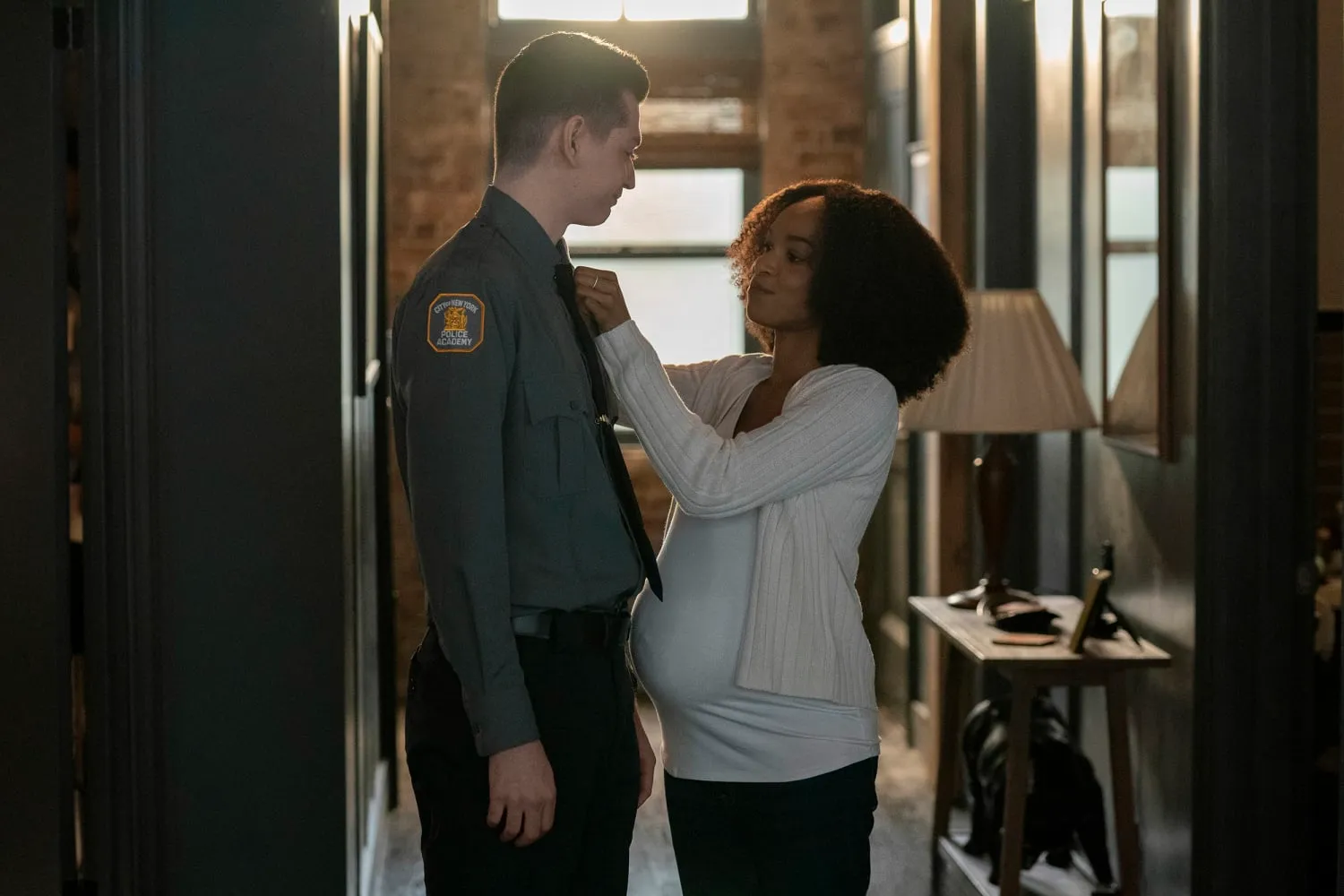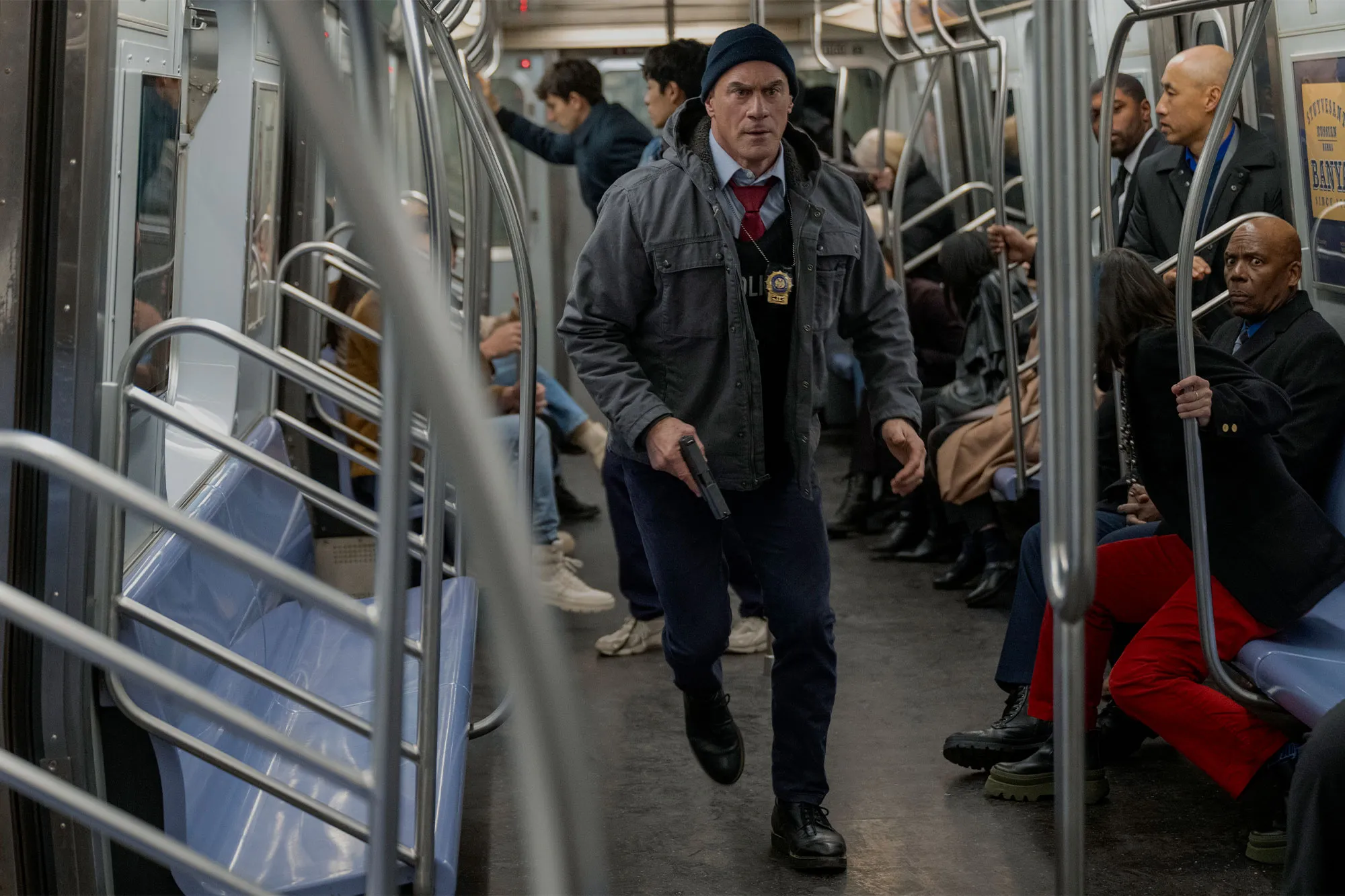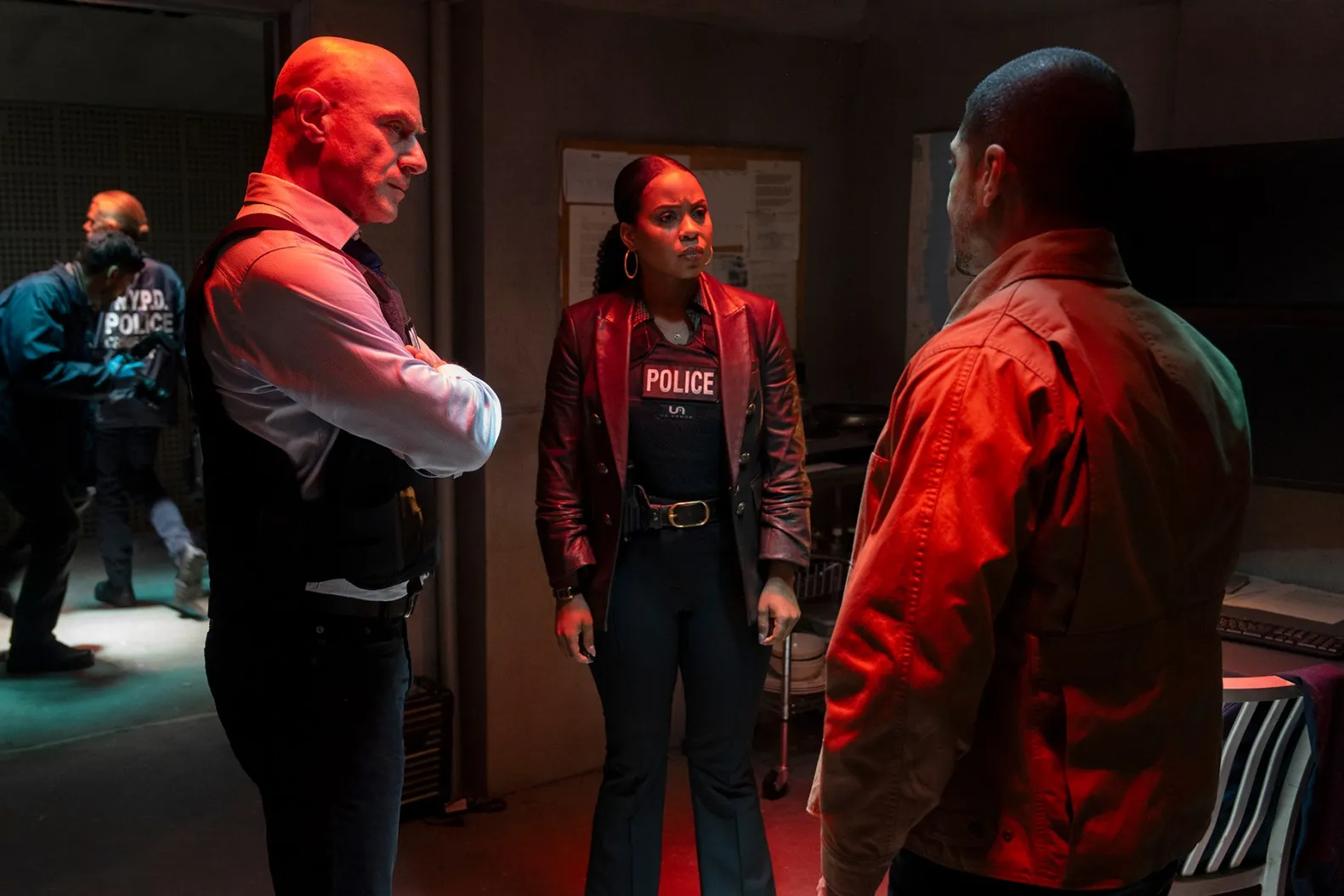From its very first frame, Law & Order: Organized Crime Season 5 stakes a claim on streaming’s darker corners (those long-haul haunts where truth and lies share the same bunk). Having peeled away from NBC’s regimented schedule to Peacock’s looser leash, the series finds Detective Elliot Stabler at once familiar and oddly recast—less the by‑the‑book enforcer we met in SVU and more a loner philosopher behind the wheel of a Freightliner. This shift in platform feels akin to the leap from stage to cinema: wider shots, deeper shadows, and a tolerance for moral ambiguity that network hours once forbade.
Here, “Hank” becomes Stabler’s alter ego, a persona forged to haul contraband across state lines for the illicit 3 Kings ring. That mirroring of man and machine (human chassis, mechanical chassis—both bearing grievous loads) gestures toward America’s own freighted history: migrant labor, the transcontinental steel frame, the invisible toll of progress. And because this is Organized Crime, the cargo extends beyond opioids to human lives—a theme that ripples through every weigh‑station encounter.
Meanwhile, the personal ledger ticks onward: Stabler’s son dons his uniform, his mother’s memory flickers like a broken taillight, and his brother holds vigil back home. Office politics with the FBI (Stabler versus “the suits”) only sharpen the central tension: can one man drive two missions at once—saving strangers on the roadside and safeguarding kin under his own roof?
Episode by episode, the show refuses episodic tidiness. Instead, it strings its beats into a tight convoy, where each diesel‑fueled revelation pushes deeper into questions of identity, loyalty, and what (if anything) can truly be left in the dust.
Highway of Threads: Plot and Narrative Structure
Season 5 weaves a single investigation through every episode, tracing the 3 Kings trucking ring from desolate roads to hidden border crossings. Drugs and human lives become interchangeable payloads—a mirror to Cold War supply routes and today’s refugee crises (only with diesel fumes instead of journalistic dispatches). This isn’t a case-of-the-week; the crime unfolds like a five-act play, each installment pulling more wiring out of the operation’s control panel.
The premiere, “Lost Highway,” hits like a battering ram: a charred corpse, a badge cast into the flames, and Stabler on day one of his undercover assignment. There’s no slow build—audiences are thrust into inferno-level urgency. A short breath later, we meet the ring’s inner circle and glimpse its international tendrils.
Mid-season, identity fractures into jeopardy. Stabler’s “Hank” persona frays at the seams during a high-stakes bust. Major blows land—confessions caught on grainy CCTV, betrayal from within OCCB, a family secret revealed in a voicemail. These beats arrive without warning, like potholes at sixty miles per hour.
Later, scattered clues converge toward the finale: a weigh‑station ambush, rescuing the trafficked, and a reckoning at home—Bernadette’s memory lapses offer painful counterpoint to Stabler’s undercover hallucinations. Will the family unit survive the fallout?
Cold opens continue to set tone: flickering engine lights, dripping gasoline, a child’s terrified stare. Then cut to OCCB headquarters, where Bell and Vargas reconstruct the puzzle on lit monitors—a techno‑ritual straight out of a cyberpunk fable.
Yet action scenes share screen time with quiet moments: Stabler late‑night calls to Eli (in training at the academy), Bell checking in on her own teenage niece—reminders that lives behind badges still pulse with hope and fear.
Subplots branch off like service roads. Eli Stabler’s rookie mistakes echo the franchise’s earliest days of young cops finding their feet. Randall and Bernadette navigate memory and loyalty, as revelations about Joey slip between heated family dinners. Back at OCCB, Bell’s standoff with the FBI and Vargas’s code‑cracking underscore that justice often requires both muscle and microchips.
Lives in the Crossfire: Character Study
Christopher Meloni’s Elliot Stabler presents a study in identity dissonance: equal parts battle‑scarred detective and devoted family man. One moment he’s a freight‑liner philosopher, brooding at dawn over the ethics of deception; the next, he’s a father of the year, leaving a voicemail that reads like a miniature TED talk on pride.
His physicality (that signature tilt of the head before a gut‑punch) contrasts with fleeting moments of vulnerability—Stabler cradles his mother’s trembling hand as if protecting a keepsake. It feels contradictory. Yet that is the point: heroism wears gaudy badges and battered hearts alike.
Danielle Moné Truitt’s Sergeant Ayanna Bell charts a moral trajectory through every showdown with the FBI’s “we need results” brigade. In one scene, she stands, arms folded, beneath harsh fluorescent lights—an ordinary cop turned moral compass. Her leadership style rejects swagger; instead, she wields quiet conviction. (When was the last time a network procedural made bureaucracy look like the true villain?)
Rick Gonzalez’s Bobby Reyes teeters between exasperation and admiration. Their partnership often resembles a mismatched road trip—Reyes driving fast, Stabler questioning every turn. Over time, Reyes’s bristling skepticism gives way to genuine trust. Ainsley Seiger’s Jet Slootmaekers provides the digital lifeline, unpacking dossiers with gleeful detachment—and slipping in dry one‑liners about pixelated footprints. Tech‑noir meets sitcom.
Federal Agent Sheppard (McKinley Belcher III) and Jason Patric’s newcomer embody institutional friction: Sheppard’s by‑the‑book pronouncements clash with OCCB’s rule‑bending pragmatism, while Patric’s shadowy task‑force liaison hovers like a Greek chorus of procedural purists. Their power dynamics play out in hushed corridors, echoing real‑world turf wars between agencies.
Within the Stabler clan, Dean Norris’s Randall anchors the family’s moral compass, even as Ellen Burstyn’s Bernadette drifts through memory shards, a poignant reminder that time fractures every fortress. Young Eli (Nicky Torchia) sparks a legacy question: does law enforcement pass from parent to child, or mutate into something unrecognizable?
And then there’s Bunny—the one‑episode “survivor” whose plight refracts larger debates on human trafficking. Her bond with “Hank” may be brief, but it cements the season’s cultural urgency: when innocent lives ride shotgun on these roads, silence becomes complicity.
Masks, Mirrors, and Moral Freight
Undercover identity in Season 5 becomes a psychological tollbooth: every lie stamped chips away at the self. Stabler hauls “Hank” like contraband—his true name hidden beneath layers of performance. (It’s a bit like living inside a deepfake, only with more diesel and less digital polish.) Deception here carries collateral damage: innocent alliances formed under false pretenses, trust sacrificed at the altar of strategic gain.
Duty versus domesticity splits Stabler’s compass. One day he’s dodging border patrols; the next, he’s grading his son’s academy uniform. The tension recalls letters home from World War II front lines—soldiers clutching dispatches while hearts remain half‑buried overseas. And when Eli steps into his father’s shoes, you sense generational echoes of legacy, both proud and precarious.
Institutional trust frays under fluorescent bulbs. OCCB and the FBI play bureaucratic tug‑of‑war, trading subpoenas like Cold War nuclear codes. Red tape tangles every operation, exposing how justice sometimes moves slower than a convoy through customs. Bell’s stand‑offs with federal agents feel eerily familiar to anyone who’s watched regulators bicker over pandemic responses or climate accords.
The human‑trafficking theme propels the show beyond mere entertainment. Sex work under duress is neither titillation nor trope—it’s the grim reality of borderlands commerce. By spotlighting cross‑border smuggling, the series taps into real-world debates about migration, exploitation, and moral responsibility. This isn’t procedural escapism; it’s a cultural Rorschach, asking viewers what they’ll do when confronted with unseen suffering.
And the tone? It leaps from high‑octane ambush to hushed family dinners. One moment, glass shatters. The next, a whispered apology. These tonal freight shifts (yes, I made up that term) keep you off balance—much like Stabler’s own life, rattled by every turn of the wheel.
Behind the Lens: Gears of Production
Direction and cinematography here evoke a modern film noir stranded on the interstate. Night‑shot trucking yards glow under sodium lamps, casting long shadows that feel haunted—an echo of 1970s road movies like Convoy (minus the spandex). Low‑angle tracking shots through cab windows accentuate Stabler’s isolation, while aerial cranes over OCCB HQ (clean, fluorescent, clinical) betray the chasm between field grit and bureaucratic sterility.
Writing and pacing shift like a multi‑gear transmission: serialized storytelling (cliffhanger payoffs that tease more than they resolve) replaced the old procedural one‑and‑done. Christopher Meloni’s pen (as writer/executive producer) injects authenticity—he knows his character’s engine sounds—but occasionally stalls in over‑familiar tropes (that undercover reveal feels straight off the assembly line).
Music and sound design play a symphony of contrast: a low‑rumble bass underscores tension on the road, while a gentle piano motif softens family tableau scenes—like two radio stations tuned simultaneously. Engine roars, screeching tires, and gunshots hit with visceral immediacy, grounding viewers in the physical toll of each chase.
Editing and effects cross‑cut Stabler’s lonely rig with the humming server racks of Vargas’s tech lair, constructing what I’d dub “parallel dramaturgy.” Flashbacks and scratchy voicemail audio (Eli’s proud father moment) layer emotional subtext over procedural beats.
Set and production design achieve a rugged verisimilitude: chipped paint on semi-trailers, dusty weigh‑station diners, and the Stabler home’s lived‑in clutter (family photos pinned above peeling wallpaper). Every detail conspires to remind us that justice, like an 18‑wheeler, demands constant maintenance.
A Franchised Web: Continuity and Crossroads
Stabler’s long shadow from SVU looms over every scene—echoes of “Paternity” flicker in his father‑son exchanges, and his old partnership with Benson haunts the fringes (a spectral ally awaiting her curtain call). These callbacks reward die‑hard viewers, creating a kind of cross‑franchise resonance that feels both comforting and unsettling.
Teases of Olivia Benson’s arrival are woven into the script like hidden freight routes—glimpsed in brief phone calls and startled reactions—hinting at a reunion that could shift the gravity of this series. Whispered hints suggest more than a cameo; expect narrative branching into SVU’s moral universe.
Beyond that, you can almost map Chicago P.D.’s procedural intensity onto OCCB’s tactics, as though Dick Wolf is drafting an expanded “Lawversiverse.” Season 5 stretches the serialized format Wolf once restricted to network TV, proving that his storytelling engine still roars, even when unbound by broadcast constraints.
Ripples in the Stream: Audience Engagement and Impact
After a nearly year‑long hiatus, the move to Peacock felt seismic—fans dissected every frame of Stabler’s “Hank” persona (the occasional GIF comparison is a mini‑essay unto itself). Hashtags trended as viewers praised his paternal moments and sparred over the show’s raw portrayal of trauma. Some debates took on a true‑crime podcast intensity, complete with amateur forensic theories.
Streaming freedoms have reshaped expectations. Episodes expand to match narrative heft, unshackled from broadcast clocks. This “binge‑sling” effect rewards deep dives into trafficking arcs but can also induce fatigue when every twist demands full attention.
By dramatizing cross‑border smuggling and coerced labor, the series casts a spotlight on modern exploitation—its “trauma theatre” may spark real‑world advocacy and policy conversations.
Questions linger for Season 6: Will Joey return from Swiss rumor to reality? Can Benson’s arrival reset the team’s moral compass? And will the trafficking saga bleed into the next chapter of Stabler’s odyssey?
Full Credits
Directors: Juan José Campanella, Jean de Segonzac, among others
Writers: Dick Wolf, Ilene Chaiken, Matt Olmstead, Warren Leight, Julie Martin, Liz Sagal, Bridget Tyler, John Shiban, Will Pascoe
Producers and Executive Producers: Dick Wolf, Ilene Chaiken, Arthur W. Forney, Peter Jankowski, Fred Berner, Terry Miller, Christopher Meloni, John Shiban, among others
Cast: Christopher Meloni, Danielle Moné Truitt, Ainsley Seiger, Rick Gonzalez, Dean Norris, Brent Antonello, Dylan McDermott, Tamara Taylor, Nona Parker Johnson, among others
Director of Photography (Cinematographer): Jim Denault, Jack Donnelly
Composer: Ruth Barrett
The Review
Law & Order: Organized Crime Season 5
Law & Order: Organized Crime Season 5 barrels forward with philosophical heft behind its diesel‑streaked thrills, balancing undercover peril and intimate family stakes. Its serialized narrative deepens character arcs and confronts real‑world trafficking, even if a few plot beats feel franchise‑familiar. Meloni’s nuanced performance, cinematic lighting, and thematic score elevate the grind. Though not flawless, its cultural ambition and narrative velocity make it a gripping ride.
PROS
- Compelling lead performance by Christopher Meloni (physical grit meets emotional nuance)
- Serialized narrative that rewards long‑form storytelling
- Thoughtful exploration of human trafficking and institutional politics
- High production values: dynamic cinematography and immersive sound design
- Strong supporting cast, from Danielle Moné Truitt’s steady Bell to Ellen Burstyn’s poignant matriarch
CONS
- Occasional reliance on familiar procedural tropes
- Pacing can feel uneven between action set pieces and quieter beats
- Some supporting characters lack sufficient screen time
- Undercover reveal moments sometimes predictable





























